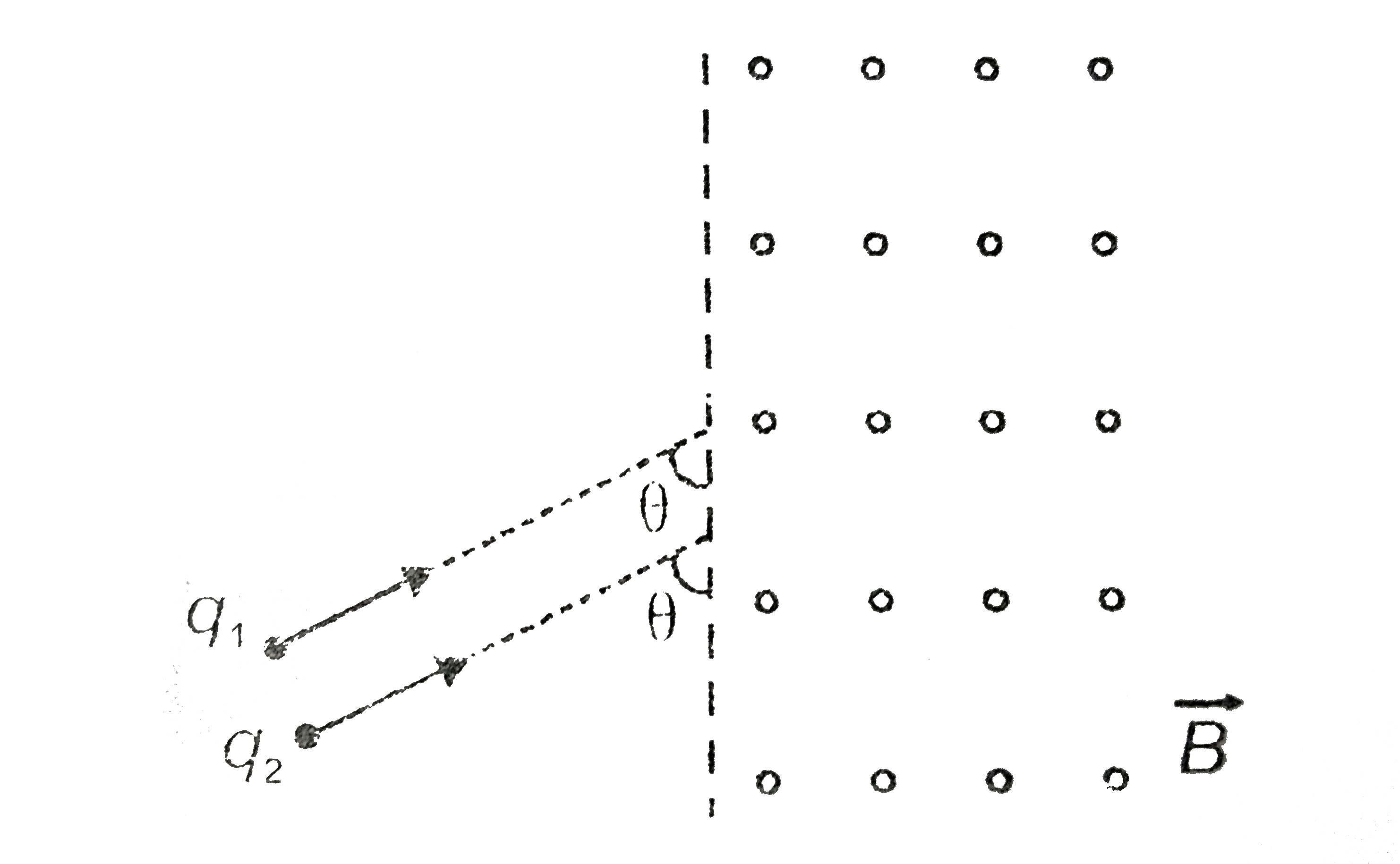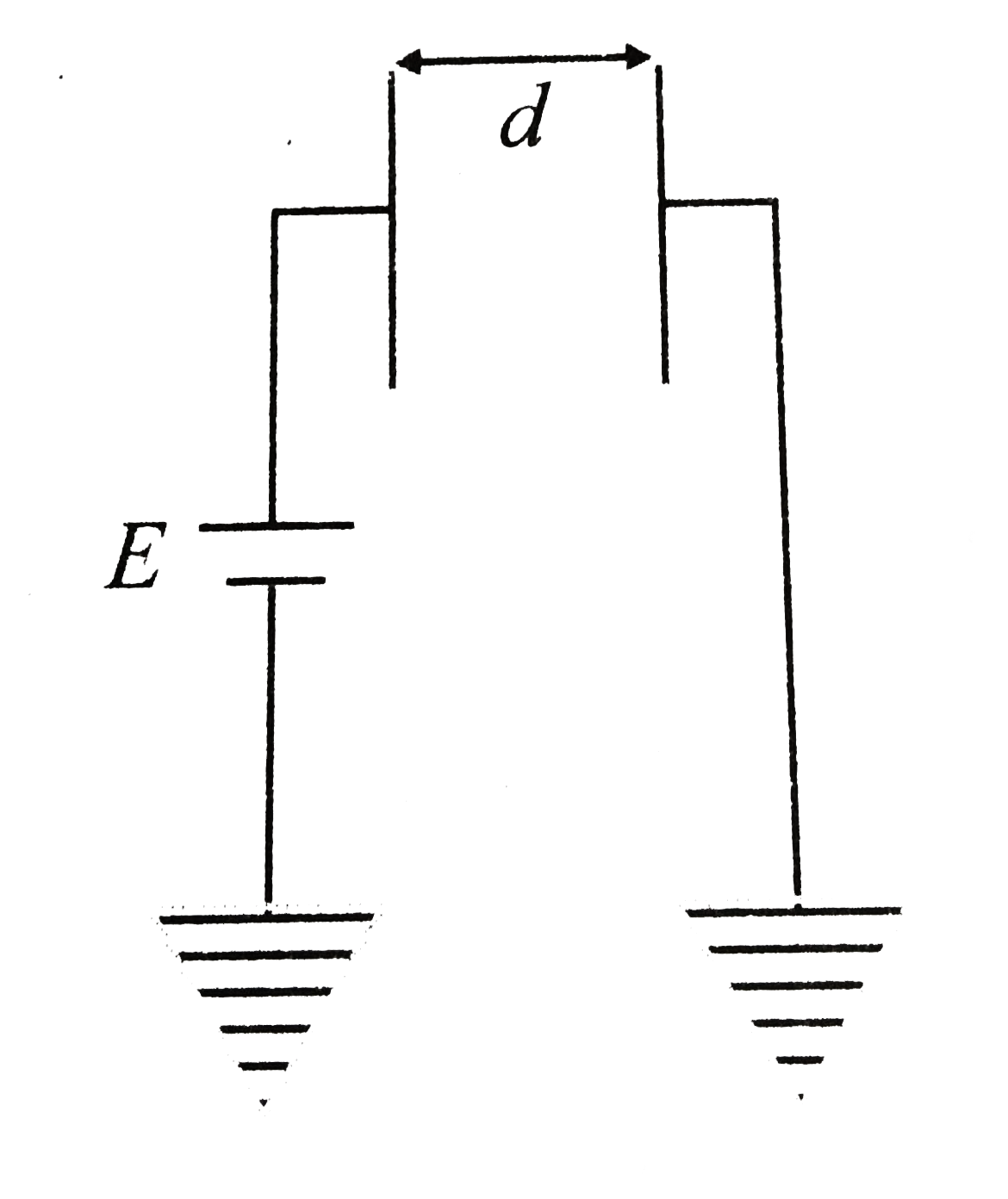Two charge of same nature are moving parallel to each other,they will
Either attract or repel
Neither attract nor repel
Attract each other
Repel each other
To solve the question regarding the behavior of two charges of the same nature moving parallel to each other, we can follow these steps:
1. Identify the Nature of Charges:
- We have two charges of the same nature, which means they can either be both positive or both negative.
2. Understand the Forces Acting on the Charges:
- Since both charges are of the same nature, they will exert a repulsive force on each other due to their electric fields. This is described by Coulomb's Law, which states that like charges repel.
3. Consider the Motion of Charges:
- As the charges are moving parallel to each other, we need to consider both the electric force (Fe) and the magnetic force (Fb) acting on them due to their motion.
4. Electric Force (Fe):
- The electric force between two charges can be calculated using the formula:
Fe=k|q1q2|r2
where k is Coulomb's constant, q1 and q2 are the magnitudes of the charges, and r is the distance between them.
5. Magnetic Force (Fb):
- When charges are in motion, they create a magnetic field, and a moving charge in a magnetic field experiences a magnetic force given by:
Fb=q(v×B)
where v is the velocity of the charge and B is the magnetic field.
6. Comparison of Forces:
- In this case, the electric force (Fe) will be much greater than the magnetic force (Fb) because the electric force is dependent on the charge and distance, while the magnetic force depends on the velocity and the magnetic field created by the moving charges.
7. Conclusion:
- Since the electric force dominates, the two charges will repel each other.
Final Answer
Two charges of the same nature moving parallel to each other will repel each other.
- We have two charges of the same nature, which means they can either be both positive or both negative.
- Since both charges are of the same nature, they will exert a repulsive force on each other due to their electric fields. This is described by Coulomb's Law, which states that like charges repel.
- As the charges are moving parallel to each other, we need to consider both the electric force (Fe) and the magnetic force (Fb) acting on them due to their motion.
- The electric force between two charges can be calculated using the formula:
Fe=k|q1q2|r2
where k is Coulomb's constant, q1 and q2 are the magnitudes of the charges, and r is the distance between them.
- When charges are in motion, they create a magnetic field, and a moving charge in a magnetic field experiences a magnetic force given by:
Fb=q(v×B)
where v is the velocity of the charge and B is the magnetic field.
- In this case, the electric force (Fe) will be much greater than the magnetic force (Fb) because the electric force is dependent on the charge and distance, while the magnetic force depends on the velocity and the magnetic field created by the moving charges.
- Since the electric force dominates, the two charges will repel each other.
Two charges of the same nature moving parallel to each other will repel each other.
Topper's Solved these Questions
Similar Questions
Two charges q1andq2 having same magneitude of charge are moving parallel to each other and they enter into a region of uniform magnetic field as shown. If they have same mass and the time spent by them in the magnetic field are t1andt2 respectively, then

View SolutionTwo equal point charges q are moving parallel to each other with the same speed v as shown in the given figure. These charges can be same visualised as parallel currents in same direction and hence they will apply magnetic attraction on each other. What will be the magnetic force exerted by one on another? At what speed this magnetic force gets balanced by the electric repulsion between them?

View Solution
Knowledge Check
Two streams of electrons are moving parallel to each other in the same direction. They
Aattract each otherBrepel each otherCcancel the electric field of each otherDcancel the magnetic field of each otherTwo electron beams are travelling parallel to each other. They
Aattract each otherBrepel each otherCdo not effect each otherDnone of theseTwo trains 1000 m long are moving parallel to each other at a speed of 100 m/s and 150 m/s respectively. After what time they pass each other?
A4sB20 sC8 sD40 s
Which of the following statements are true (T) and which are false (F)? Give reasons. (i)If two lines are intersected by a transversal, then corresponding angles are equal. (ii)If two parallel lines are intersected by a transversal, then alternate interior angles are equal. (iii)Two lines perpendicular to the same line are perpendicular to each other. (iv)Two lines parallel to the same line are parallel to each other. (v)If two parallel lines are intersected by a transversal, then the interior angle on the same side of the transversal are equal.
View SolutionTheorem 6.6 : Lines which are parallel to the same line are parallel to each other.
View SolutionTwo electrons move parallel to each other with equal speed 'V' the ratio of magnetic & electric force between them is
View SolutionTwo trains each of length 100 m moving parallel towards each other at speed 72km/h and 36km/h respectively. In how much time will they cross each other?
View SolutionTwo plates, each of area A, are placed parallel to each other at a distance d. One plate is connected to a battery of emf E and its negative is earthed. The other plate is also earthed. The charge drawn by plate is

View Solution
